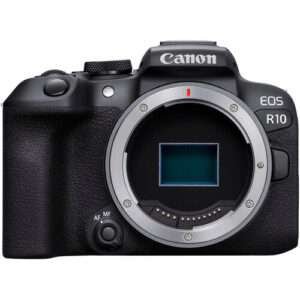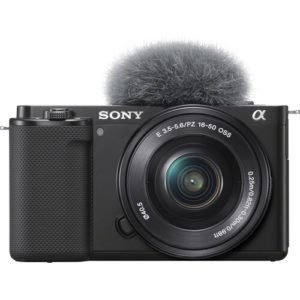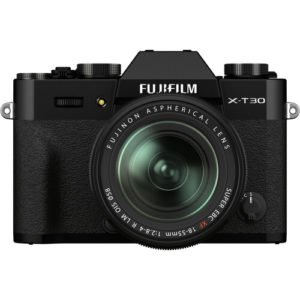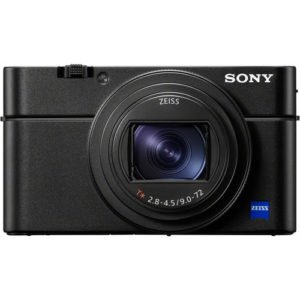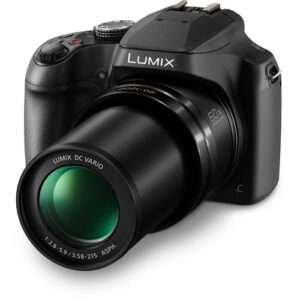Best Cameras for Beginners in 2024
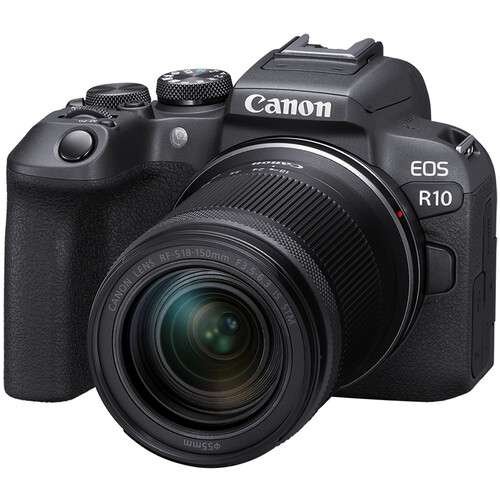
In this age of rapidly advancing smartphone camera technology, it’s easy to get swept up in the allure of capturing stunning photos with just a few taps on a touchscreen. Yet, if you’re truly passionate about honing your photography skills and delving deeper into the captivating world of visual storytelling, a dedicated camera for beginners still reigns supreme. With their larger image sensors, superior lenses, lightning-fast autofocus capabilities, and a host of specialized features tailored specifically for photography and videography, these entry-level cameras have the power to surpass the limitations of even the most impressive smartphones.
However, navigating the vast landscape of camera options can feel like venturing into uncharted territory, with bewildering technical jargon and a seemingly endless array of choices. Fear not, for amidst this sea of possibilities lies the perfect camera that will cater to the unique needs and aspirations of every budding photographer. Whether you’re an eager enthusiast yearning to capture breathtaking landscapes, an aspiring portrait artist longing to immortalize the beauty of human emotion, or a curious explorer eager to document your every adventure, the best cameras for beginners await your discovery.
So, fellow photography enthusiasts, let’s embark on this thrilling expedition in pursuit of the best cameras for beginners. The realm of photography beckons – are you ready to answer its call?
Best Overall Camera for Beginners: Canon EOS R10
Best Budget Camera for Beginners: Canon EOS R50
Best Vlogging Camera for Beginners: Sony ZV-E10
Best DSLR Camera for Beginners: Canon EOS Rebel SL3
Best Full-Frame Mirrorless Camera for Beginners: Nikon Z5
Best Beginner Camera for Travel: Fujifilm X-T30 II
Best Point-and-Shoot Camera for Beginners: Sony RX100 VII
Best All-In-One Superzoom Camera for Beginners: Panasonic Lumix FZ80
How we picked the best cameras for beginners
The team at CameraTimes possesses extensive photography expertise, accumulated over several decades. Throughout our journey, we have extensively utilized and evaluated nearly all prominent camera models, including numerous choices designed for beginners. Additionally, I had the privilege of serving as a photography instructor at a university for five years, during which I regularly recommended and utilized beginner cameras in my teachings.
In the process of selecting the aforementioned cameras, our primary objective was to offer a diverse range of options that cater to varying needs and budgets. One of our foremost considerations was ensuring user-friendliness. Furthermore, we thoroughly assessed aspects such as image and video quality, autofocus capabilities, stabilization, and any distinctive features each camera had to offer. Finally, we carefully handpicked cameras that boast compatibility with a wide selection of lenses, ensuring greater flexibility and more opportunities for future exploration.
Best Overall Camera for Beginners
Canon EOS R10
Canon EOS R10 Key Specs:
- 24.2MP APS-C CMOS Sensor
- Dual Pixel CMOS AF II
- 4K30 Video, 4K60 with Crop; HDR-PQ
- 23 fps E. Shutter, 15 fps Mech. Shutter
- 2.36m-Dot OLED EVF
- 1.04m-Dot Vari-Angle Touchscreen LCD
- Multi-Function Shoe, Wi-Fi and Bluetooth
- Single UHS-II SD slot
- Weight: 382.2 g (Body Only), 429.2 g (With Battery, Recording Media)
- Store links at B&H, Adorama.
Pros:
- Compact and lightweight
- Speedy burst mode
- 4K video
- Good value
Cons:
- No weather sealing
- No in-body stabilization
- Cropped 4K/60p video
- Single card slot
The Canon EOS R10 has made its mark as one of the best cameras for beginners and casual social media creators. This compact and affordable entry-level mirrorless camera is the perfect companion for vloggers looking to kickstart their YouTube career or create engaging content for their social media accounts. With its compact size and affordable price, it packs a punch with its 24.2-megapixel APS-C sensor, providing a balance between resolution, file size, and low-light performance. While it may not have the highest megapixel count compared to some alternatives, it still offers more than enough for most users, especially those starting their photography journey.
When it comes to video capabilities, the EOS R10 impresses with its 4K30p video, oversampled from 6K, resulting in sharp and clear footage. This is particularly remarkable for an APS-C camera in this price range. Additionally, it offers 4K60p with a crop or 120p at full HD resolution, providing versatility for various videography needs.
In terms of still images, the EOS R10 delivers excellent image quality and handles noise exceptionally well, making it reliable in low-light situations. The camera’s JPEG files also offer an impressive dynamic range, giving beginners ample room for editing, even without shooting in raw format. With its fast burst shooting capability of 23 fps using the electronic shutter, it becomes possible to capture fast-action scenes with ease.
One of the standout features of the Canon EOS R10 is its autofocus system. It boasts the lightning-fast Dual Pixel CMOS AF II, previously found in Canon’s professional-grade cameras. This advanced autofocus system enables precise tracking of humans, animals, subjects, and vehicles, making it a versatile tool for various shooting scenarios. Furthermore, the camera’s lightweight design, weighing just 429g, makes it an excellent choice for extended shooting sessions, such as during weddings or events.
The Canon EOS R10 offers an outstanding value proposition, providing advanced specifications in an affordable and beginner-friendly package. Whether you’re an experienced user or just starting out, this camera empowers you to achieve impressive results while also helping you develop your skills further. With access to Canon’s RF mount and a wide range of compatible lenses, you can expand your creative possibilities and capture high-quality content effortlessly.
In conclusion, the Canon EOS R10 is a highly capable camera that caters to beginners and social media creators. Its compact size, impressive image quality, 4K video capabilities, fast burst shooting, and advanced autofocus system make it an excellent choice for those looking to dive into the world of photography and videography. With its affordable price point, the EOS R10 offers incredible value and the potential to unlock your creativity in stunning detail.
Canon EOS R10 body at B&H, Adorama.
Canon EOS R10 with 18-45mm Lens at B&H, Adorama.
Canon EOS R10 with 18-150mm Lens at B&H, Adorama.
See also:
Best Budget Camera for Beginners
Canon EOS R50
Canon EOS R50 Key Specs:
- 24.2MP APS-C CMOS Sensor
- DIGIC X Image Processor
- UHD 4K 30p Video Recording, Full HD Video up to 120 fps
- Dual Pixel CMOS AF II with 651 Zones
- 2.36m-Dot Electronic Viewfinder
- 3.0″ 1.62m-Dot Vari-Angle Touchscreen
- 15 fps Electronic Shutter
- Movie for Close-Up Demos Mode
- Vertical Movie Mode
- Multi-Function Shoe, Wi-Fi & Bluetooth
- Weight: 328 g (Body Only), 375 g (With Battery, Recording Media)
- Store links at B&H, Adorama.
Pros:
- Fantastic autofocus with subject recognition
- UHD 4K 30p video oversampled from 6K
- Front-facing LCD and eye-level EVF
- Very compact and lightweight
- Great image quality
- Affordable
Cons:
- No in-body image stabilization
- No weather-sealing
The Canon EOS R50 is an excellent budget-friendly camera designed for beginners and content creators. With its compact size, fully articulating LCD touchscreen, and simplified menus, it is easy to use and navigate. The screen can be flipped all the way around, making it perfect for selfies and vlogging. Despite its small form factor, the camera provides a comfortable grip for extended shooting sessions.
One of the standout features of the EOS R50 is its uncropped 4K video capability. The camera oversamples from 6K, resulting in sharp and clear footage. While it lacks in-body image stabilization (IBIS), it offers digital IBIS, and pairing it with a gimbal can help achieve stable shots while on the move. The camera also captures raw files, but its JPEGs boast excellent colors and good dynamic range.
Despite its budget price, the EOS R50 is an interchangeable-lens camera. It comes with the RF-S 18-45mm f/4.5-6.3 IS STM lens in the kit, but users have the flexibility to explore other lenses as well.
The Canon EOS R50 excels as a versatile and lightweight camera for vloggers, content creators, and travel enthusiasts. Its 24.2MP APS-C sensor delivers high-resolution images, especially when paired with the RF-S 18-45mm and 18-150mm lenses. Although these lenses may not be in the same class as the L series optics, they are more than satisfactory for producing excellent web images and reasonably sized prints.
With its compact size, user-friendly interface, and a range of bells and whistles, the Canon EOS R50 is a great choice for beginners and those looking for a fun and hassle-free camera experience. It offers excellent video capabilities, a reliable autofocus system, and the ability to connect wirelessly for seamless file transfer. The camera’s 4K video, high-speed burst shooting, and the flexibility of the RF lens lineup make it a powerful tool for both newcomers and more advanced users. Whether you’re upgrading from a smartphone or seeking an all-purpose camera, the Canon EOS R50 is a compelling option that won’t disappoint.
Canon EOS R50 body at B&H, Adorama.
Canon EOS R50 with 18-45mm Lens at B&H, Adorama.
See also:
Best Vlogging Camera for Beginners
Sony ZV-E10
Sony ZV-E10 Key Specs:
- 24.2MP APS-C Exmor CMOS Sensor
- UHD 4K30p and Full HD 120p Video
- 3.0″ Side Flip-Out Touchscreen LCD
- 425-Point Fast Hybrid AF
- Up to 11-fps Shooting, ISO 100-32000
- Real-Time Eye AF and Tracking
- Background Defocus & Face Priority AE
- Directional 3-Capsule Mic and Windscreen
- Headphone and Microphone Ports
- Weight: 12.1 oz / 343 g (With Battery, Recording Media)
- Store links at B&H, Adorama.
Pros:
- Small and lightweight
- Highly detailed 4K video quality
- 1080/120p video for slow-motion capture
- Class-leading AF tracking with face and eye detection well-integrated into UI
- Excellent image quality
- Fully articulating touchscreen
- Livestreaming capabilities
- Excellent battery life for its class
- On-board microphone provides decent quality audio
- 3.5mm headphone and microphone jacks
- Keenly priced
- Wide potential in lens range available
Cons:
- No in-body image stabilization
- No weather resistance
- No electronic viewfinder
The Sony ZV-E10 is the ultimate vlogging camera for beginners, offering a range of features specifically tailored to meet the needs of aspiring content creators. With its APS-C sensor and 4K movie capability, this camera delivers high-quality videos that are sure to captivate viewers. Additionally, the ZV-E10 features image stabilization and real-time autofocus tracking for eyes and faces, ensuring that your footage is stable and sharp.
Designed with portability in mind, the ZV-E10 is compact and lightweight, making it easy to carry around for on-the-go filming. When paired with the 16-50mm power zoom kit lens, it becomes an even more versatile and affordable option for vloggers. Whether you’re streaming, using it as a webcam, or capturing stills, this camera is capable of delivering exceptional results in all areas.
The ZV-E10 also offers a range of connectivity options, allowing you to seamlessly transfer files and connect to external devices. Its vari-angle screen allows for easy framing and monitoring while filming, and the integrated directional microphone ensures that you capture clear and accurate sound from front-facing subjects. The camera even comes with a windscreen to minimize wind noise during outdoor shooting.
While the ZV-E10 excels in many areas, it does have a few downsides. The lack of in-body stabilization may result in less stable handheld footage, and the noticeable rolling shutter effect in 4K can distort background lines when filming on the move. However, these drawbacks are outweighed by the camera’s overall performance and value.
In conclusion, the Sony ZV-E10 is a fantastic choice for novice vloggers and content creators who want to take their video content to the next level. With its affordable price point, compact design, and impressive feature set, it provides everything you need to create professional-looking videos that stand out from the crowd.
Sony ZV-E10 Body at B&H, Adorama.
Sony ZV-E10 with 16-50mm Lens at B&H, Adorama.
See also:
Best DSLR Camera for Beginners
Canon EOS Rebel SL3
Canon EOS Rebel SL3 Key Specs:
- 24MP APS-C sensor with Dual Pixel on-sensor Autofocus
- DIGIC 8 Image Processor
- 3.0″ 1.04m-Dot Vari-Angle Touchscreen
- UHD 4K24p Video and 4K Time-Lapse Movie
- Optical viewfinder with secondary 9-point autofocus system
- ISO 100-25600, Up to 5 fps Shooting
- Excellent ‘guide’ mode for beginners
- Built-In Wi-Fi and Bluetooth
- Weight: 15.84 oz / 449 g (With Battery, Recording Media)
- Store links at B&H, Adorama.
Pros:
- Compact and light, especially for a DSLR
- Great Live View autofocus response
- Vari-angle touchscreen
- Wi-Fi and Bluetooth connectivity
- Simple but effective controls
- Genuinely useful ‘guide mode’ for beginners
- Affordable
Cons:
- 4K video results in significant crop and no Dual Pixel autofocus
- No in-camera Raw processing
- Autofocus struggles with action
- Not as capable as mirrorless alternatives
The Canon EOS Rebel SL3 stands out as an excellent DSLR camera option for beginners, offering a compact size, comfortable grip, and impressive image quality. Its guide mode is particularly helpful for those transitioning from Auto mode, providing valuable information about exposure settings and aiding in making informed decisions.
Equipped with a 24.1-megapixel APS-C sensor, the Rebel SL3 delivers good image quality with vibrant colors straight out of the camera. While its autofocus may not be as responsive as newer mirrorless cameras, it still performs admirably and is suitable for a wide range of photography genres, though it may not excel in fast-paced sports or wildlife scenarios.
The camera’s optical viewfinder adds flexibility to the shooting experience, and the solid build quality ensures comfortable handling. However, video quality is not the camera’s strongest suit, and advanced users may eventually find themselves longing for more customization options and controls.
The Rebel SL3 is an ideal choice for casual family and social photographers, travel enthusiasts, and individuals starting their photography journey. It caters to those looking to learn the basics of photography while providing satisfying results. However, more advanced users seeking greater control, better video quality, or fast action photography may find the SL3 lacking in those areas.
Overall, the Canon EOS Rebel SL3 is a compact and user-friendly DSLR camera that produces high-quality images. It is a great option for beginners looking to delve into photography, offering a solid value for the money invested. With its comfortable grip, intuitive controls, and reliable performance, the Rebel SL3 is sure to capture memorable moments with ease.
Canon EOS Rebel SL3 body at B&H, Adorama.
Canon EOS Rebel SL3 with 18-55mm lens at B&H, Adorama.
See also:
Best Full-Frame Mirrorless Camera for Beginners
Nikon Z5
Nikon Z5 Key Specs:
- 24.3MP FX-Format CMOS Sensor
- EXPEED 6 Image Processor
- 4K/30p video capture (with 1.7x crop)
- 1080/60p video capture (no crop)
- 3.6m-Dot OLED Electronic Viewfinder
- 3.2″ 1.04m-Dot Tilting Touchscreen LCD
- 4.5 fps continuous shooting with AF
- 5-Axis Sensor-Shift Vibration Reduction
- Headphone and microphone ports
- Dust and moisture sealed
- Built-In Wi-Fi and Bluetooth
- Dual SD UHS-II Card Slots
- Weight: 590 g (Body Only)
- Store links at B&H, Adorama.
Pros:
- Rugged build quality
- 5-axis in-body image stabilization
- Good EVF and tilting rear screen
- Dual UHS-II card slots
- Intuitive autofocus
- Great weather sealing all-round
Cons:
- 4.5 fps burst may be sluggish for some
- 1.7x crop is applied when shooting 4K (UHD) video
The Nikon Z5 is an exceptional full-frame mirrorless camera that stands out as the best choice for beginners. It offers a seamless transition into the world of full-frame photography or serves as a fantastic upgrade from an APS-C camera. Built around a 24.3-megapixel full-frame sensor and the powerful EXPEED 6 image processor, the Z5 delivers outstanding image quality. Notably, it boasts the best electronic viewfinder (EVF) in its price range, featuring a 3.6m-dot OLED EVF that aids in composing and exposing your shots.
In terms of video capabilities, the Z5 can shoot 4K video, albeit with a 1.7x crop. However, Full HD at 60 fps is available without any crop. The camera supports timelapses and can produce a final UHD 4K video file directly in-camera. Its autofocus system is fast, responsive, and user-friendly, with the added benefit of Face and Eye AF for both people and animals.
While the Z5 may not match the low-light performance of its slightly more expensive counterpart, the Nikon Z6, it compensates with 5-axis in-body image stabilization (IBIS), providing up to five stops of stabilization. This feature enables confident shooting at slower shutter speeds. Moreover, the camera boasts a fully weather-sealed body, ensuring durability even in challenging shooting conditions.
The Nikon Z5 is an excellent choice for photographers seeking a budget-friendly full-frame mirrorless camera that excels in still photography. The camera’s intuitive autofocus system, impressive image quality, and weather-sealed body make it an appealing option for various photography genres. However, for videographers and those requiring fast-action capture, the Z5’s cropped 4K video and 4.5 fps burst rate may fall short of their needs.
Overall, the Nikon Z5 strikes an ideal balance between affordability and performance, making it a highly recommended choice for entry-level full-frame mirrorless cameras. Its image quality, autofocus capabilities, user-friendly interface, and weather resistance make it a versatile tool for photographers looking to explore the realm of full-frame photography without breaking the bank.
Nikon Z5 body at B&H, Adorama.
Nikon Z5 with 24-50mm Lens at B&H, Adorama.
Nikon Z5 with 24-200mm Lens at B&H, Adorama.
See also:
Best Beginner Camera for Travel
Fujifilm X-T30 II
Fujifilm X-T30 II Key Specs:
- 26.1MP APS-C X-Trans BSI CMOS 4 Sensor
- X-Processor 4 with Quad CPU
- Video: Cine DCI 4K/30p and Full HD 120fps
- Max burst: 8fps mechanical shutter, 20fps electronic shutter, 30fps with crop
- 2.36m-Dot OLED Electronic Viewfinder
- 3.0″ 1.62m-Dot Tilting LCD Touchscreen
- 425-Point Phase-Detection Autofocus
- Mechanical and Electronic Shutter
- Extended ISO 80-51200
- Bluetooth and Wi-Fi; Sports Finder Mode
- Ultra-Sonic Vibration Sensor Cleaning
- Weight: 329 g (Body Only), 378 g (With Battery, Recording Media)
- Store links at B&H, Adorama.
Pros:
- Beautiful image quality
- Sleek, retro styling
- Compact, Lightweight but premium build
- Creative film simulation modes
- Uncropped 4K
- Good AF detection
Cons:
- No in-body image stabilization
- No weather sealing
- The screen is tilt-only (not articulated)
The Fujifilm X-T30 II is a fantastic camera for travel enthusiasts and beginners alike. With its attractive retro design, compact size, and built-in film presets, it offers a delightful shooting experience. Despite its small form factor, it houses a powerful 26.1-megapixel X-Trans back-side illuminated CMOS sensor, delivering impressive image quality and high-end features.
One of the standout features of the X-T30 II is its film simulation presets, which allow users to achieve polished-looking images straight out of the camera. This is especially beneficial for beginners who may not be well-versed in post-processing. The camera’s compact size and tilting touchscreen make it a perfect travel companion, freeing you to explore rather than spending time editing on a computer.
For everyday snapshots, travel photography, and landscapes, the X-T30 II excels and offers great value for the price. However, it may not be the best choice for action or sports photography in challenging lighting conditions.
While the X-T30 II is a minor upgrade over its predecessor, it remains one of the top affordable interchangeable lens cameras on the market. Its sensor, autofocus system, and video capabilities make it a versatile mid-range camera suitable for travel and everyday photography.
With its familiar aesthetic and traditional exposure controls, the X-T30 II resembles its predecessors, the X-T4 and X-T3. It shares the same 26.1MP X-Trans CMOS 4 sensor and X-Processor 4, making it ideal for travel photography due to its compact and lightweight body.
The camera’s advanced features include high-resolution stills, 4K video recording, and an enhanced autofocus system. The 425-point phase-detection autofocus system offers fast and accurate performance, particularly with face and eye detection. The X-Processor 4 ensures quick image processing and enables continuous shooting at up to 8 fps with a mechanical shutter and 30 fps at a 1.25x crop with an electronic shutter. It also supports internal DCI/UHD 4K30 video recording.
With its sleek design, intuitive controls, high-resolution viewfinder, and tilting touchscreen LCD, the X-T30 II offers a pleasant shooting experience. It also features built-in Bluetooth for wireless sharing and remote control.
Overall, the Fujifilm X-T30 II is a versatile mirrorless camera that excels in both stills and video recording. Its compact size, powerful features, and attractive design make it an excellent choice for travel photography and everyday use.
Fujifilm X-T30 II body at B&H, Adorama.
Fujifilm X-T30 II with 15-45mm Lens at B&H, Adorama.
Fujifilm X-T30 II with 18-55mm Lens at B&H, Adorama.
See also:
Best Point-and-Shoot Camera for Beginners
Sony RX100 VII
Sony RX100 VII Key Specs:
- 20.1MP 1″ Exmor RS BSI CMOS Sensor
- BIONZ X Image Processor & Front-End LSI
- 24-200mm equivalent F2.8-4.5 zoom
- Up to 20-fps Blackout-Free Shooting
- Seven frame, 90 fps ‘single burst’ mode
- UHD 4K30p Video with HLG & S-Log3 Gammas
- High speed video at up to 1000 fps
- 0.39″ 2.36m-Dot OLED Pop-Up EVF
- 3.0″ 921.6k-Dot 180° Tilting Touchscreen
- Fast Hybrid AF, 357 Phase-Detect Points
- Real-Time Tracking and Eye-AF
- Wi-Fi with Bluetooth and NFC
- Weight: 10.65 oz / 302 g
- Store links at B&H, Adorama.
Pros:
- Industry-leading autofocus implementation
- 20 frames per second shooting
- Stabilized 4K video with minimal rolling shutter
- Sharp and versatile 8x zoom lens
- No blackout during bursts
- Good viewfinder
- Pocketable
Cons:
- Pricey for the category
The Sony RX100 VII stands out as the ultimate point-and-shoot camera, offering exceptional performance and versatility in a compact and portable design. While it may come with a higher price tag for a point-and-shoot camera, its features and capabilities make it a strong contender for the title of the best compact camera on the market.
Equipped with a 20.1MP 1-inch format sensor, the RX100 VII captures an impressive amount of light, surpassing the capabilities of smartphone cameras. Despite its diminutive size, measuring just 4 x 2.29 x 1.69 inches, it delivers oversampled 4K30p video with HLG and S-Log3 gammas, ensuring superb video quality. Additionally, the camera allows you to extract 8.29MP still images directly from your videos, providing even more creative possibilities.
When it comes to action photography, the RX100 VII doesn’t disappoint. With burst shooting capabilities of up to 20 fps, or an incredible 90 fps for seven frames, you can capture fast-moving subjects with ease. The camera features a pop-up viewfinder with a resolution of 2.36 million dots, offering a clear and detailed view of your compositions.
The 24-200mm-equivalent lens provides an impressive 8x zoom range, allowing you to get closer to your subjects without compromising image quality. Sony’s autofocus system, known for its excellence, ensures that your images are sharp and well-focused, requiring minimal effort on your part.
In addition to its impressive specifications, the RX100 VII offers other features that enhance its usability. It includes a pop-up viewfinder, a 180° flipping screen for selfies, and a host of other functions that make it suitable for various shooting scenarios.
While the camera excels in many aspects, its small maximum aperture may limit its performance in low-light conditions. However, for those seeking a versatile zoom range and reliable autofocus in a pocket-sized package, the RX100 VII is an excellent choice. It caters to travel and family photographers, video enthusiasts, and vloggers who value portability without compromising on image quality.
Overall, the Sony RX100 VII impresses with its speed, reach, and portability. With its advanced features, exceptional image quality, and smooth 4K video capabilities, it offers a compelling solution for both stills and video shooting. Whether you’re capturing precious family moments or documenting your adventures, the RX100 VII delivers the versatility and performance needed to create stunning visuals in a pocket-friendly form factor.
Sony RX100 VII at B&H, Adorama.
See also: Best Memory Cards for Sony RX100 VII
Best All-In-One Superzoom Camera for Beginners
Panasonic Lumix FZ80
An all-in-one bridge camera
Panasonic Lumix FZ80 Key Features:
- Point & Shoot Camera
- 18.1MP 1/2.3″ MOS Sensor
- Lumix DC Vario 60x Zoom Lens
- 20-1200mm (35mm Equivalent)
- 1.166m-Dot Electronic Viewfinder
- 3.0″ 1.04m-Dot Touchscreen LCD Monitor
- 4K UHD Video Recording at 30 fps
- ISO 6400, 10 fps Shooting, 4K Photo Mode
- Built-In Wi-Fi Connectivity
- Post Focus and Focus Stacking
- POWER O.I.S., DFD AF System
- Store links at B&H, Adorama.
Pros:
- Easy to use
- Lightweight and compact
- Huge 60x wide-angle zoom lens offers a lot of versatility
- Superb 4K video and image quality
- 10fps Raw capture
- 30fps 4K Photo capture
- 3 inch Touchscreen LCD
- Sharp EVF
- Good value for money
Cons:
- No eye sensor for EVF
- Fixed rear LCD
- Weak high-ISO performance
- Poor image quality in low light
The Panasonic Lumix FZ80 is an excellent all-in-one camera that provides a fantastic shooting experience for beginners. While it may not have the same image quality as cameras with larger sensors, it more than makes up for it with its versatile built-in lens and affordable price.
One of the standout features of the Lumix FZ80 is its impressive 60x optical zoom, which allows you to capture a wide range of subjects, from close-ups to landscapes to far-off wildlife. With a focal length range equivalent to 20-1200mm in 35mm format, this camera truly offers superzoom capabilities that will impress any photographer.
In addition to its zoom capabilities, the Lumix FZ80 boasts 4K video recording and a variety of shooting modes to experiment with different styles and subjects. The camera’s macro mode is perfect for capturing detailed close-ups, while the ‘4k PHOTO’ mode is ideal for shooting sports and fast-moving subjects. These features provide plenty of creative opportunities for casual or family photography.
The camera’s design is compact and portable, making it easy to take on the go. It fits in your pocket, ensuring that you’re always ready to capture those special moments. The touchscreen LCD and electronic viewfinder offer intuitive control and convenient composition options.
While the Lumix FZ80 may not match the image quality of DSLRs, it delivers good results and is an excellent choice for those on a tight budget. Its power Optical Image Stabilization helps minimize camera shake, and the lens construction effectively suppresses spherical aberrations.
With its 4K video capabilities, impressive zoom range, and user-friendly design, the Panasonic Lumix FZ80 is a solid choice for beginners looking for an affordable all-in-one camera. It’s a versatile tool that provides great value for the price, making it a worthy investment for casual or family photography.
Panasonic Lumix FZ80 Camera at B&H, Adorama.
See also: Best Memory Cards for Panasonic Lumix FZ80.
Things to consider before buying the best cameras for beginners
Before buying a camera as a beginner, there are several important factors to consider:
- Budget: Determine your budget range as it will help narrow down your options and prevent overspending. Keep in mind that in addition to the camera body, you may need to budget for lenses, accessories, and memory cards.
- Camera Type: Decide on the camera type that suits your needs. DSLR cameras offer a traditional shooting experience, a wide range of lens options, and are often more affordable. Mirrorless cameras are more compact, lightweight, and offer advanced features like electronic viewfinders and 4K video capabilities. Point-and-shoot cameras are simpler to use and highly portable.
- Sensor Size: Sensor size affects image quality and low-light performance. Full-frame sensors provide better image quality and perform well in low light, but they are more expensive. APS-C and Micro Four Thirds sensors are smaller but still deliver good image quality and are more budget-friendly.
- Megapixels: While megapixels alone don’t determine image quality, a higher megapixel count allows for larger prints and more flexibility in cropping photos. Most cameras today have sufficient megapixels for general photography needs.
- Lens Compatibility: If you opt for an interchangeable lens camera (DSLR or mirrorless), consider the available lens options and their costs. A wide range of lenses allows for versatility in capturing different types of subjects.
- Camera Size and Ergonomics: Consider the size and weight of the camera. It should feel comfortable in your hands, especially if you plan to shoot for extended periods. Compact cameras are easier to carry, while larger ones may offer better grip and controls.
- Ease of Use and Learning Curve: As a beginner, you’ll want a camera with intuitive controls and user-friendly features. Look for helpful features like built-in guides, automatic shooting modes, and touchscreens for easy navigation.
- Battery Life: Check the camera’s battery life, especially if you plan to shoot for long periods or travel extensively. Consider purchasing spare batteries or a camera with good battery performance.
- Video Capabilities: If you’re interested in videography, look for cameras with high-resolution video options, frame rate settings, and external microphone inputs for better audio quality.
- Connectivity and Sharing: Consider the camera’s connectivity features such as Wi-Fi, Bluetooth, or NFC, which enable seamless sharing of photos and remote control via a smartphone or tablet.
- Reviews and Recommendations: Read reviews, watch YouTube videos, and seek recommendations from experienced photographers or trusted sources to gather insights about the camera’s performance, image quality, and reliability.
By carefully considering these factors, you can find a camera that aligns with your budget, preferences, and goals as a beginner photographer.
FAQs
Q: How much does a camera for beginners cost?
The price range of the best cameras for beginners can vary significantly, ranging from $600 to $2,000, depending on the camera’s features and specifications. The cost is determined by factors such as the desired capabilities, the extent to which you want to expand your photography skills, and your budgetary constraints.
Q: Is Canon or Nikon better for beginners?
Both Canon and Nikon excel in providing beginner-friendly cameras, ensuring a smooth entry into photography. Nikon took the lead for some time by incorporating a useful Guide Mode in all their entry-level DSLRs, but Canon has caught up by introducing Guided mode in their latest Rebel cameras, which offers explanations of each setting as you adjust them.
In today’s market, there is no definitive “best” brand for beginners. What truly matters is selecting a camera that offers the right combination of features to align with your photography style and goals. Additionally, the ergonomics and feel of the camera in your hands play a significant role, so whenever feasible, we recommend trying out cameras before making a purchase.
Q: What should I look for when buying a camera?
The most important aspect to consider when purchasing a camera is its usability, as it’s essential to have a camera that you’ll actually use. This factor holds particular significance for beginners, as it helps prevent discouragement throughout the learning process.
While many cameras in the market tend to emphasize specific features, the best cameras for beginners strike a harmonious balance between all three: usability, features, and performance. Finding a camera that excels in these aspects is key to a satisfying photography experience.
Final thoughts on the best cameras for beginners
- Best Overall Camera for Beginners: Canon EOS R10
- Best Budget Camera for Beginners: Canon EOS R50
- Best Vlogging Camera for Beginners: Sony ZV-E10
- Best DSLR Camera for Beginners: Canon EOS Rebel SL3
- Best Full-Frame Mirrorless Camera for Beginners: Nikon Z5
- Best Beginner Camera for Travel: Fujifilm X-T30 II
- Best Point-and-Shoot Camera for Beginners: Sony RX100 VII
- Best All-In-One Superzoom Camera for Beginners: Panasonic Lumix FZ80
Don’t be deceived by the enticing claims of smartphone marketing. If you truly desire to capture breathtaking pictures and delve into the enchanting realm of photography, a dedicated camera will far surpass the capabilities of the pocket-sized computer in your hand. The good news is that the market is brimming with a plethora of exceptional entry-level cameras that cater to every individual style, aspiration, and financial plan. Whether you’re embarking on this photographic adventure yourself or searching for the perfect gift for a loved one, discovering the best cameras for beginners is merely the initial stride towards unlocking a world of boundless creativity and cherished memories. Get ready to embark on a captivating journey that will ignite your passion for photography and unveil the wonders that await through the lens.
Read more:
- Best Cameras Under $400
- Best GoPro Cameras
- Best Canon RF Lenses
- Best Canon Cameras for Vlogging
- Best Canon Lenses for Vlogging
- Best Canon Cameras for Video
- Best Cameras for Wedding Photography
